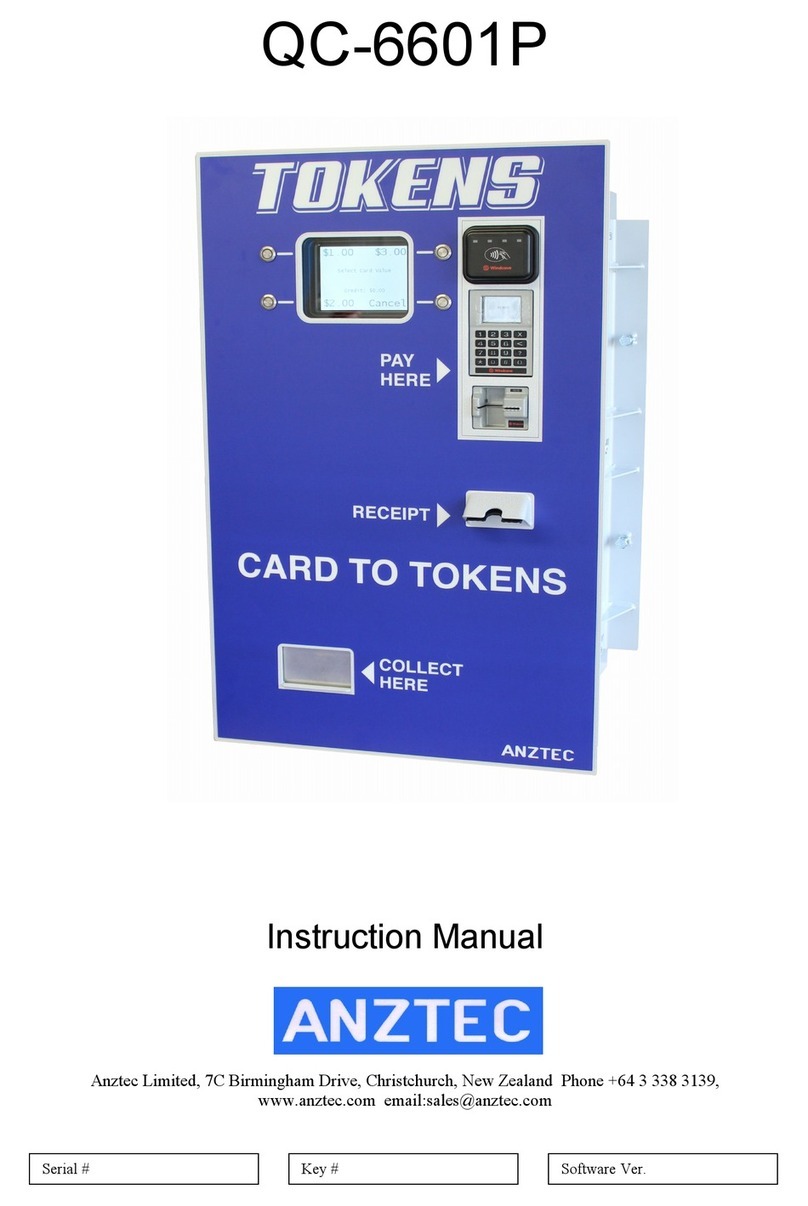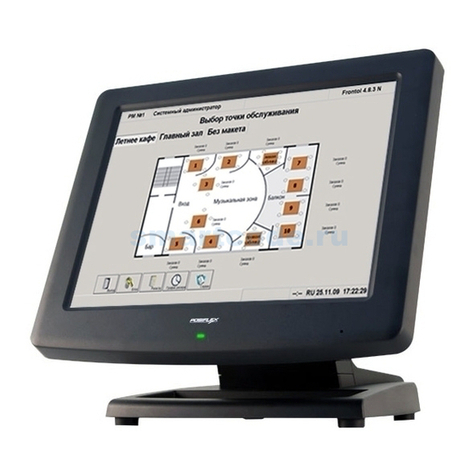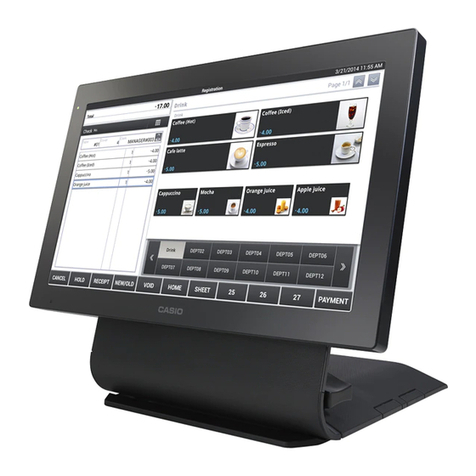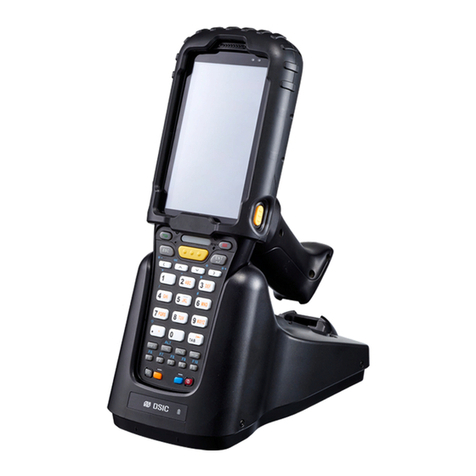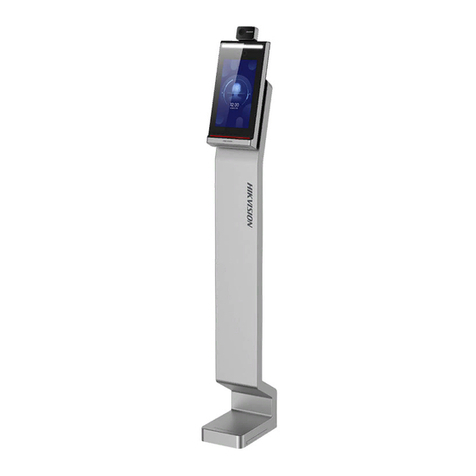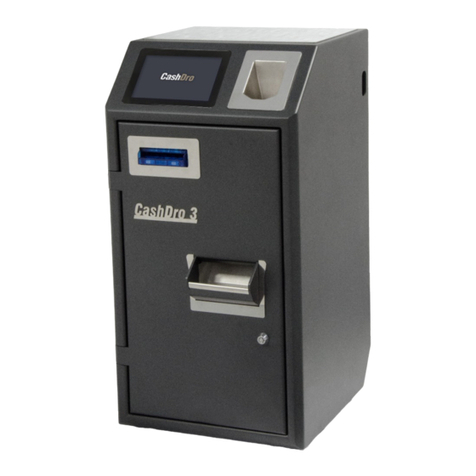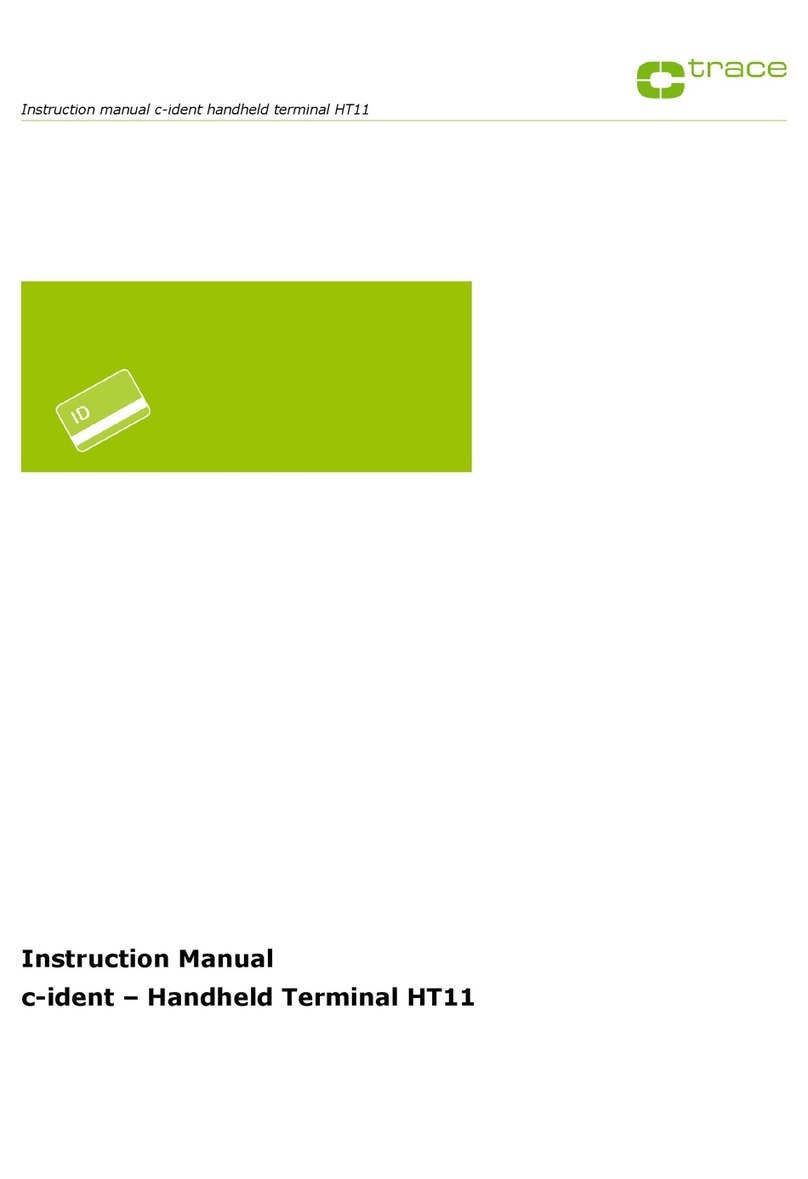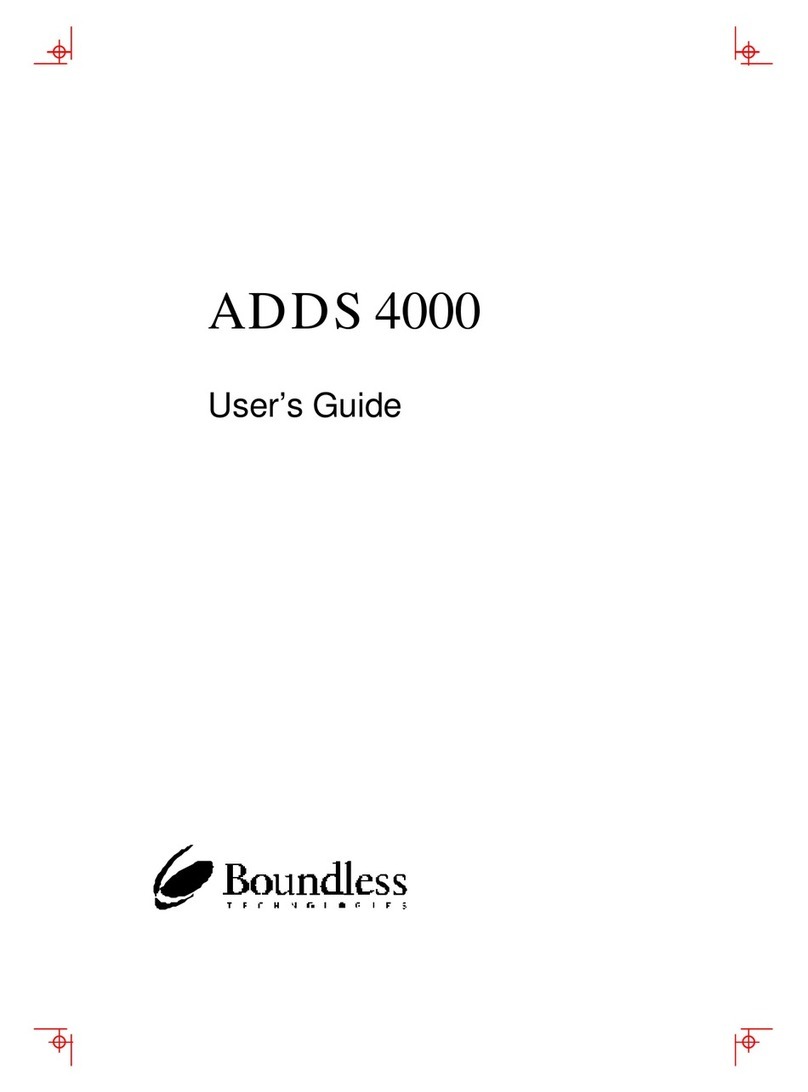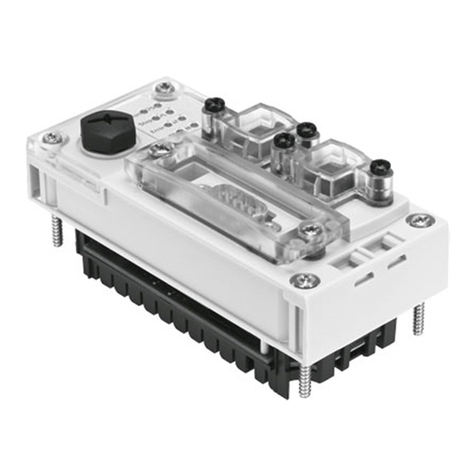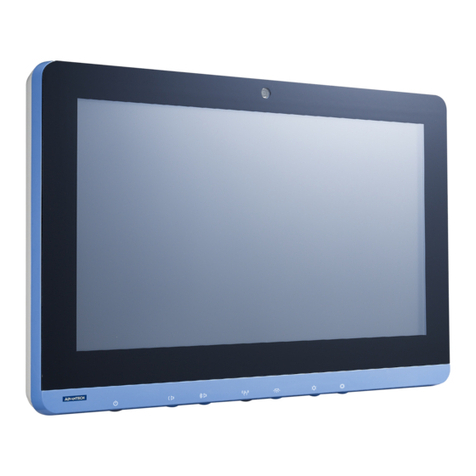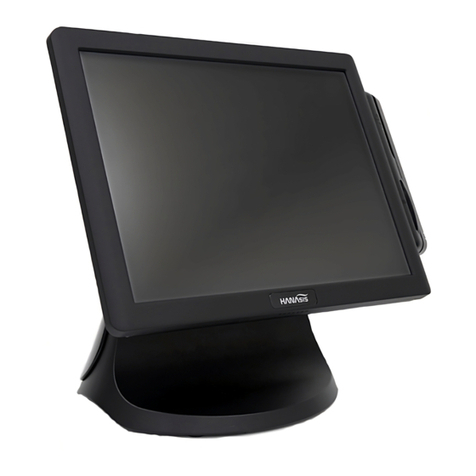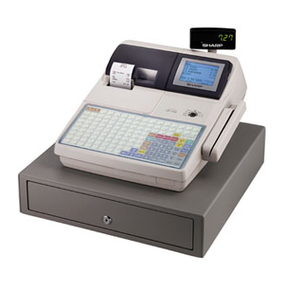Ropam elektronik BasicGSM 2 User manual

BasicGSM 2 - GSM notification and control module,
GSM terminal.
Ropam Elektronik
Tel. +48 12 272 39 71
Faks +48 12 379 34 10
Polanka 301
32-400 Myślenice, Polska
www.ropam.com.pl
biuro@ropam.com.pl
Wersja dokumentu : 1.0
2017-10-06
Installation Manual (DTR).

© 2017 Ropam Elektronik
WARNINGS
For safety reasons, this equipment should be installed only by qualified personnel.
Before proceeding with the installation, refer to the above instruction, the connection
must be performed without the power supply.
Do not power on the unit without connecting an external antenna (starting the device
without the antenna connected may damage the phone transmissions and void the
warranty!).
Do not interfere with construction or carry out repairs yourself.
Protect your electronics against electrostatic discharges.
In order to meet LVD and EMC requirements, the following must be observed: power,
installation, shielding - according to application. The device is a source of
electromagnetic waves, so it may interfere with other radio devices in specific
configurations.
Ropam Elektronik is not responsible for any malfunction of the GSM network and any
possible technical problems.
.
WEEE LABELING
Waste electrical and electronic equipment must not be disposed of with household
waste. According to the WEEE directive (EU Directive 2002/96 / EC), electrical and
electronic equipment used should be used separately. In Poland, it is prohibited to place
together with other wastes of worn equipment marked with a crossed-out wheeled bin
symbol in accordance with the regulations on waste electrical and electronic equipment.
The user who intends to dispose of this product is obliged to give the above mentioned.
to the point of collection of used equipment. Collection points are conducted, among
others. by the wholesale and retail sellers of this equipment and the municipal
organizational units engaged in waste collection activities. The correct implementation
of these obligations is particularly important in the case of hazardous equipment that has
a negative impact on the environment and human health.
The power supply unit is compatible with a 12V DC lead acid battery (SLA, VRL). It
should not be discarded after use, but must be disposed of in accordance with the
applicable regulations.
(European Union Directives 91/157 / EEC and 93/86 / EEC).

© 2017 Ropam Elektronik
Spis treści
1. Introduction................................................................................................................................. 1
Introduction ..................................................................................................................................... 1
Properties........................................................................................................................................ 1
Appliance ........................................................................................................................................ 2
Warrnings........................................................................................................................................ 2
Requirements for SMS control and mobile applications................................................................. 3
Device version ................................................................................................................................ 3
2. System description ..................................................................................................................... 5
Description of connectors and components.................................................................................... 5
Optical status indication.................................................................................................................. 8
Additional modules and extensions. ............................................................................................... 9
3. Installation and commissioning................................................................................................. 10
Basic requirements. ...................................................................................................................... 10
Power requirements in accordance with PN-EN 50131-6. ........................................................... 10
Wiring system................................................................................................................................ 12
Installation and commissioning procedure.................................................................................... 12
Connection of devices to the inputs.............................................................................................. 13
Connecting devices to the outputs................................................................................................ 14
Connection of speech synthesizer, audio module........................................................................ 16
4. System configuration................................................................................................................ 18
System configuration: BasicGSM Manager.................................................................................. 18
Description of the program toolbar............................................................................18
Local configuration via USB port...............................................................................18
Connection to the module via GPRS........................................................................19
Functional description...............................................................................................20
Tab: SIM card settings.................................................................................................................. 20
Tab: Phone numbers nad e-mail addresses................................................................................. 24
Tab: Inputs.................................................................................................................................... 24
Input settings - binary I1-I6. .......................................................................................................... 24
Input settings - Analog I7, I8......................................................................................................... 26
Inputs - Notifications. .................................................................................................................... 28
Tab: Outputs ................................................................................................................................. 29
Tab: Outputs - Notifications. ......................................................................................................... 32

© 2017 Ropam Elektronik
Tab: Timers................................................................................................................................... 33
Tab: Communication, Tests, Counters ......................................................................................... 34
Tab: System options. .................................................................................................................... 36
Tab: Temperature. ........................................................................................................................ 37
Tab: LogicProcessor..................................................................................................................... 40
Logical functions. .......................................................................................................................... 42
Time / counter functions................................................................................................................ 48
Tab: Events Memory..................................................................................................................... 51
Tab: Online view. .......................................................................................................................... 51
Netmonitor GSM (BTS)................................................................................................................. 56
Upgrade to a newer version......................................................................................57
Module software update...........................................................................................57
System configuration: SMS commands........................................................................................ 58
Remote configuration: TELEPHONE NUMBERS / SMS CENTER.............................................. 59
Remote configuration: TEMPERATURE. ..................................................................................... 59
Remote configuration: OTHER SETTINGS.................................................................................. 60
Ropam Basic mobile Application. ................................................................................................. 61
Set access to the application....................................................................................61
Description of application windows...........................................................................62
Descriptions and features of application icons..........................................................63
Pre-set the application..............................................................................................66
RopamDroid mobile application.................................................................................................... 68
RopamDroid application description.........................................................................69
Installation and configuration of RopamDroid. ..........................................................71
View application windows.........................................................................................73
5. Reset the device to factory settings.......................................................................................... 75
6. System maintenance................................................................................................................ 76
7. Technical parameters............................................................................................................... 77
8. Version history.......................................................................................................................... 79

Page 01
Introduction
© 2017 Ropam Elektronik
1. Introduction
Introduction
Thank you for choosing Ropam Elektronik products and solutions. We hope that our devices will meet
your requirements and will be served reliably for many years. Ropam Elektronik continues to innovate
their products and solutions. With the update function, products can be enhanced with new features
and follow the requirements of modern home and office security systems. We invite you to visit our
website www.ropam.com.pl for information on current versions. If you have any additional questions,
please contact us by phone or email.
This manual applies to products in a given software. Because the operation of the device depends on
the setup of the installer, all functions covered by this option are marked (service).
Properties
BasicGSM 2 / - PS terminals are the successors to the series of earlier BasicGSM modules. The first
is BasicGSM 2 with 12VDC power supply and BasicGSM 2 - PS power supply with built-in buffer battery
support and emergency power supply. New terminals are equipped with the latest GSM modem for 2G
networks and many new features.
The basic features of the BasicGSM 2 series are:
- compact design, smaller dimensions,
- versions for a DIN rail, BasicGSM D4M-2 BasicGSM D4M-PS-2 (width four DIN modules),
- basicGSM-BOX in surface-mounted housing, AT-GSM-MINI90 antenna, anti-tamper protection,
- disconnectable connectors,
- antenna socket SMA,
- nanoSIM slot,
- microUSB - for programming and updating,
- socket for connecting PSR-ECO-2012 power supply (BasicGSM 2 / -D4M),
- 6 inputs NO/NC (I1-I6)
- 2 inputs NO/NC, GND, +12V, 0-10V, 4..20mA,
- 1 relay output (O1) for controlling eg. a gate,
- 3 OC outputs - protected against short-circuits and overload (0.7A),
- 1 AUX protected output (1A),
- 4 calendar timers, RTC clock, synchronization with GSM network,
- TSR-x temperature sensor support, GSM thermostat,
- LogicProcessor, logic functions, time relays,
- CALL, SMS, SMTP e-mail notification),
- Remote programming via GPRS (RopamBridge server),
- dedicated RopamBasic mobile application (Android, IOS) via GPRS and RopamBridge server
(and the current RopamDroid - SMS messaging, Android system),

Page 02
Introduction
© 2017 Ropam Elektronik
- visualization and control of alarm system using input / output, the effect is intuitive control of vigil
by pictograms "arm", "disarm" (expansion and modernization of DSC, Paradox, Satel, etc. by GPRS /
SMS / DTMF control),
- BasicGSM-PS 2 power supply compliant with PN-EN 50131-6, step 1 or 2, power supply type A,
- Operation with PSR-ECO-2012-RS (only BasicGSM 2 modules).
Appliance
BasicGSM 2 / - PS terminals are designed for integration with other devices (eg visualization and control
of the alarm system using the input / output), the effect is intuitive control of vigil by pictograms "arm",
"disarm" (expansion and modernization of DSC, Paradox, Satel, etc. by GPRS / SMS / DTMF, PLC
controllers, relays, drivers) via binary inputs and outputs. With built-in GSM modem it is possible to
transmit events from the system via SMS, VOICE, E-MAIL. For servicing and control serves SMS, CLIP,
DTMF, RopamBasic, RopamDroid.
Appliance:
• notification for alarm systems,
• notification for Fire Brigades TSO with siren control,
• multi-operator control of gate automation, barrier via CLIP (CallerID),
• home automation systems, timer functions,
• systems for monitoring and control via GSM signals, binary I / O,
• temperature control and monitoring systems eg server rooms, refrigerators (vaccines), refrigerators,
thermal processes,
• analogue sensor control and monitoring systems with 0-10 V outputs, 4-20 [mA], eg relative humidity,
temperature,
• temperature control,
• access control systems,
• monitoring and control of technological processes, for example. pumping stations, CO boiler, feedlots,
• Buffer 12VDC power supply (UPS 12V) for additional devices, relays, lights. (versions -PS).
Warrnings
Ropam Elektronik units are part of a complete alarm system, whose effectiveness depends on the
quality and technical condition of all devices (detectors, signalers), wiring, etc. of the system. The user
is required to periodically test the operation of the alarm system. Detailed system control is determined
by the installer who designed the system. Periodic system maintenance (with state control, backup
power, system operation, notification, etc.) is recommended.
Ropam Elektronik is not responsible for the correct operation of operators and GSM network
infrastructure used for alarm and remote control messages. It is advisable to use a GSM operator that
guarantees min. Two BTSs of the given system location with GSM communication. In addition, we
recommend using such services and subscriptions available on the market that guarantee correct
operation (human factor minimization, eg blocked outgoing calls due to lack of funds in the account,
allow for full configuration of the GSM track (for example, disable advertising services).
We do not recommend using national roaming operators!
In addition, it should be noted that the services guaranteed by GSM operators are voice services
(VOICE) rather than SMS, so important information should be transmitted via voice calls and the exact
identification of the event takes place in the SMS (eg VOICE + SMS, CLIP + SMS).

Page 03
Introduction
© 2017 Ropam Elektronik
For service like e-mail transmission it is recommended to create a independent e-mail account (eg.
Alarm@domena.pl) in a proven provider e-mail accounts. Sharing of data to an SMTP server from a
private account can result in unauthorized access to these accounts.
Requirements for SMS control and mobile applications.
For the service via SMS and RopamDroid mobile phone, the smartphone must encode the SMS:
GSM or UNICODE alphabet other formats are not supported!
For RopamDroid applications, your smartphone must have compatible SMS support from the Android
API, and do not have overlays, other SMS intercept apps that have priority for inbox or outbox.
For proper configuration and operation of RopamDroid you need the proper configuration of the
system and knowledge of the data (service):
- knowledge of the phone number of the SIM card installed in the system,
- knowledge of "SMS code / login password for application" and active option: "Possible change of
configuration via SMS", "SMS active control", "send confirmation of SMS command execution"
- to control outputs via RopamDroid, the control setting via SMS for the output is required,
- to control TermostatemGSM is required to run a function of temperature measurements and the
thermostat.
For proper setup and operation of RopamBasic it is required to have adequate knowledge of system
configuration and data (service):
- knowledge of the phone number of the SIM card installed in the system,
- knowledge of "SMS password / application login password" and active option: "Possible remote
programming via GPRS",
- knowledge of the encryption key TCP / IP.
- control via the RopamBasic requires the setting triggered by the "Mobile Application" for the output,
- for controlling the GSM thermostat, it is necessary to start the function of temperature measurement
and thermostat.
Device version
BasicGSM 2 is available in several versions, below is the name and options of the device.
BasicGSM - BOX 2, module equipped with tamper cover:

Page 04
Introduction
© 2017 Ropam Elektronik
BasicGSM 2: BasicGSM - PS 2:
BasicGSM - D4M 2: BasicGSM-D4M-PS 2:

Page 05
System description
© 2017 Ropam Elektronik
2.System description
Description of connectors and components.

Page 06
System description
© 2017 Ropam Elektronik
View: BasicGSM 2

Page 07
System description
© 2017 Ropam Elektronik
Connector /
element
Description / Function
+ V -
Power terminals: DC or AC
BasicGSM 2 = 10,5÷14,5V/DC
BasicGSM-PS 2 = 16÷20V/AC lub 20÷28V/DC
I1÷I6
Configuration: NO, NC, second input terminal GND
I7÷I8
Binary / analog inputs, configuration: NO, NC, GND or + 12V (second input
terminal GND or + 12V)
analog inputs, 0-10, 4-20, software scaling to any physical values (eg.
temperature = C, RH =%, p = kPa)
GND (x3)
terminal "GND" module, common to power, inputs
AUX
power supply (+) for 12V / DC / 1A devices eg relays, LEDs, controlled from OC
outputs
O1
controlled relay output, terminals COM, NO, NC, load 1A @ 30VDC or 1A @
50VAC,
O2÷O4
Controlled OpenCollector outputs (OC, GND / 0,7A) Second AUX load terminal
(+ 12V) or external DC voltage, outputs 0.7A @ 24VDC short circuit protection
(OCP), Overload (OLP), Thermal (OHP), Overvoltage (OVP),
FAC
AC power supply switch, DC = + V supply voltage, eg + 24V,
(the device must be powered from an AC / DC or DC / DC power supply
using AC or DC common voltage, common potential GND, 0V)
DO1÷DO4
Status LEDs for outputs O1 ÷ O4
nano SIMCARD
slot for mounting nano SIM card (horizontal)
+ BAT -
Connector for battery connection 12V (emergency power supply):
+ BAT (red) = '+' battery
- BAT (black) = '-' of the battery
(PSRM connector and module only for BasicGSM-PS 2)
MODEM GSM
modem, GSM / DCS / EGSM industrial phone
SMA-F
Antenna connector with SMA-F output, for GSM antenna connection
USB micro-B
USB micro-B USB port for use with a service computer, used for local
programming or firmware upgrades (USB A-USB micro-B cable required)
VSR
Connector for VSR-1, VSR-2 speech synthesizer, AMR-1 audio module
or VAR-1 module.
T1
Communication interface for connection of temperature sensors TSR-1

Page 08
System description
© 2017 Ropam Elektronik
Optical status indication.
The device is equipped with state optical signaling. On the PCB there are LEDs that indicate the status
of work: notification, PC communication, firmware upgrade.
LED
COLOUR
SIGNALING STATE
NORMAL
SIGNALING PROGRAMMING STATE
COMM
GREEN
• short flashes every 8 seconds. = correct
communication with GSM modem
• blinking alternating (wave); COMM-SEND-LOG-
FAIL = change firmware in module (active
communication)
SEND
YELLOW
• sending SMS and voice notification, the notification
action is as follows:
NOTIFICATION OF SMS
-1 flash = send SMS on NUMBER 1, ... 8 flashes =
send SMS on NUMBER 8,
VOTE NOTIFICATION
- 1 flash = connection to NUMBER 1, ... 8 flashes =
connection to NUMBER 8,
• blinks every 1s. = connection to a service
computer
• blinking alternating (wave); COMM-SEND-LOG-
FAIL = change firmware in module (active
communication)
LOG
BLUE
• series of short flashes from 1 to 5 every 2 seconds
= GSM network level status (1-min 5 = max)
• no flashing = phone not logged on GSM network
• blinking alternating (wave); COMM-SEND-LOG-
FAIL = change firmware in module (active
communication)
FAIL
RED
• a series of short flashes approx. every 2 seconds =
TROUBLE CODE (including SMS STATE):
01 - low level of network, below 2 "bars" (RSSI <15)
02 - modem not logged on GSM network
03 - failed to send three SMS messages in series (kept
for correct transmission)
04 - connection to the monitoring station
05 - GPRS problem (message transmission: EMAIL)
06 - no communication with GSM modem
07 - PIN code error (PUK lock)
08 - SIM card problem, SIM card not detected by
modem
09 - Jamming was detected
10 - overload or short circuit of AUX output
11 - power supply problem (too low or too high module
power supply - see table: technical parameters)
12 - battery error (uncharged, no voltage)
13 - configuration data corruption in EEPROM
(memory)
14 - power failure 1 wire
15 - Serial Flash failure
16 - RTC failure, wrong time setting
17 - no connection to RopamBridge
18 - outage blocked daily counters: sending SMS,
ringing, sending an email
• blinking alternating (wave); COMM-SEND-LOG-
FAIL = change firmware in module (active
communication)
INCOM
YELLOW
• not lit = no incoming calls to module number
• lit = incoming call, receiving SMS to module number
• INCOM 1s / 1s blinking = connected to
RopamBridge
AC/DC
GREEN
• lit = for versions - PS basic power supply current
17V / AC or 24V / DC
• blinks = for versions - PS no power supply, battery
power, for 12V DC power supply correct

Page 09
System description
© 2017 Ropam Elektronik
Additional modules and extensions.
TSR-xx: TEMPERATURE SENSOR
TSR-1, TSR1HT, TSR-1TEL, TSR-2 temperature range as for TSR1-HT.
Digital temperature sensor with measuring range -55 ° C to + 125 ° C (resolution 0.5 ° C, reading
every 60s).
VSR-2: Speech Synthesizer:
Module for recording and playback of 16 audio messages (8 x 16sec. + 8 x 8sec), additionally allows
to connect audio module for listening to the object. Terminal functions allow you to add independent
messages from several (5) recordings in case of violation, temperature thresholds, AI thresholds.
VSR-1: Speech Synthesizer
Remembers 20 second voice prompt.
AMR-1: AUDIO MODULE
The audio module allows you to listen to an audio object: during an alarm or after a voice call. The
module is connected to the VSR input.
PSR-2012 ECO:
High-efficiency AC / DC pulse generator. P = 20 [W], Iout = 1.6A, U = 13.8 [V]

Page 10
Installation and commissioning
© 2017 Ropam Elektronik
3.Installation and commissioning
Basic requirements.
The system is based on BasicGSM 2 and the other required components are for installation by a
qualified installer with appropriate (required and required by country) permits and permissions to
connect (interference) to 230V / AC systems and low voltage installations. The units should be
installed indoors, with normal humidity (RH = 20% - 90% max non-condensing) and temperatures in
the range -10 ° C ... + 55 ° C. Before installing, make a load balancing of the power supply. Because
the system power supply is designed for continuous operation and does not have a power switch,
proper overload protection in the power supply circuit must be provided. Also tell the user how to
disconnect the power supply from the power supply (usually by splitting and marking the appropriate
fuse in the fuse box). Electrical installation should be carried out in accordance with applicable
standards and regulations.
When selecting the module mounting location, the communication module should be guided by the
following criteria:
- GSM network coverage (SIM card operator used for the module)
- the GSM antenna and other system components (eg power supply) must be in the protected area,
- availability and distance from alarm / triggering sources (eg control panel);
- availability or possibility of installation in the immediate vicinity of the power source:
- availability of facilities for third parties and sabotage tests,
- keep a safe distance from sources of possible interference (eg 230Vac power lines - buildings, radio
transmitters, etc.).
Power requirements in accordance with PN-EN 50131-6.
The PS * type A ** power supply should supply electrical power to I & HAS *** components without
interruption. To meet the appropriate degree 1,2 or 3 acc. EN 50131-6, the emergency power supply
must run at a minimum of Td (implemented by limiting the power consumption from the power supply:
Id + Iz) and the battery charging time to 80% of the rated capacity can not exceed the time: TQ0,8C.

Page 11
Installation and commissioning
© 2017 Ropam Elektronik
The performance of the EPS power supply during battery operation. Specifies the standard PN-EN
50131-6:
Qbat = 1.25 * [(Id + Iz) * Td
where:
Qbat - battery capacity [Ah]
1,25 - factor considering the decrease in battery capacity due to aging
Id-current taken by the receivers during surveillance [A]
I-charge for the needs of the power supply [A]
Td - required watch time [h].
Degree of protection acc.
standards PN-EN 50131-6
Minimum periods of standby backup
power supply: Td
Recharging time up to 80% C of
the battery: TQ0,8C
PS degree 1
12h
72h
PS degree 2
12h
72h
PS degree 3
30h with reporting to ARC ***
60h without reporting to ARC
24h
* A power supply (PS), - storage device, delivery, as well as transforming and separating (electrically)
electrical power to the I & HAS or part thereof comprising at least PU and SD. Power Supply Unit (PU)
- a device that supplies, converts and separates (electrically) electricity into I & HAS or parts thereof
and to SD if required. Battery (SD) - a device that stores energy (eg battery).
** type A - basic power source, eg power grid and backup power supply from I & HAS, eg
rechargeable battery with I & HAS,
*** I & HAS (Intruder and Hold Up Alarm Systems): intrusion and intrusion alarm system.
**** ARC (Alarm Receiving Center): When sending signals to an alarm receiving center, the Td value
of 60h for the EPS of the stage 3 can be doubled to 30h. The PSR-ECO series power supplies allow
for reporting on the RopamNET bus or through the technical outputs of the power supply.
To meet the other requirements of the standard. Tamper protection system should be used Ropam.

Page 12
Installation and commissioning
© 2017 Ropam Elektronik
Wiring system.
System cabling should be made using low voltage cables. In addition, it should comply with the
regulations and standards in particular: cable type selection and cross-section, 230V / AC wiring
distance,
Other connections should be made according to the manufacturer's instructions and if not, you can
use the following cables:
• YTDY, YTLZ,
• UTP, STP, FTP,
• YTSKY,
• Other low current compliant with regulations and standards.
Installation and commissioning procedure.
1. Make complete wiring: signal and power supply,
2. Install the enclosure and insert the wiring through the cable glands,
3. Install the SIM card in the module (the card must not be installed while the power is on!),
- insert horizontally into the SIMCARD connector, the gold-plated SIM card towards the PCB, the SIM
card (notch) must be pointing at the slot in the SIM card slot on the module board.
Below is a view of the SIM card installation process in BasicGSM 2 / BasicGSM - PS 2 - Profile view.
4. Install the board and modules in the enclosure:
a) in the system housings (Ropam) on the pins included,
b) in the enclosures of the control panel transmitters on the self-adhesive pins supplied with the
module,
c) in the control cabinets with the latch fixing the DIN housing on the mounting rail.
5. Optional additional modules:
- for VSR connectors: VSR-2, VSR-2 + AMR-1 or VSR-1 or AMR-1,
- to the T1 connector: TSR-xx,

Page 13
Installation and commissioning
© 2017 Ropam Elektronik
6. Connect the wires to the appropriate terminals, eg signaling devices, relays
7. Connect the external antenna to the SMA-F connector (in the system casing, move the SMA
connector from the SMA-F connector to the casing hole).
8. Turn on the module power.
9. Connect the cable connecting the service computer to the USB-Micro jack.
10. Configure the system as needed.
11. Make tests and tests.
12. Disconnect the cable from the USB-microphone connector.
Connection of devices to the inputs.
The system supports many types of input polarization.
Can work with any of the following:
- Detectors for outputs: NC (Normally Closed), NO (Normally Open)
- alarm outputs: relays (RELAY - potential-free contacts),
- open collector (OC - BELL): control "negative" power,
- high current (transistor: control + 12V)
- Analog outputs 0-10 [V], 4-20 [mA] (I7 and I8 only)
Configuration input: NC.
Configuration input: NO.

Page 14
Installation and commissioning
© 2017 Ropam Elektronik
Input (I7, I8) in the configuration NC, software configurable (BasicGSM Manager).
Input (I7, I8) in the configuration: NO, configurable software (BasicGSM Manager).
Input I7 / I8 to connect a voltage or current source.
FAC input for AC voltage control (on isolation transformer).
Connecting devices to the outputs.
The module has outputs allowing control and signaling.
O1 - relay output - 1A @ 30VDC

Page 15
Installation and commissioning
© 2017 Ropam Elektronik
-
Output O1: Connection of the 12V DC (acoustic and / or optical).
Output O1: connection of 12V DC load.
- O2-O4 in the active state can supply (NO) or disconnect (NC) 0V power supply (GND).
(open collector transistor output OC, control "supply ground", 700mA max.)
O2-O4 output: connection of 12VDC / 700mA siren max. (acoustic and / or optical).

Page 16
Installation and commissioning
© 2017 Ropam Elektronik
Output O2-O4: connection of 12V DC, power supply + 12V = AUX.
O2-O4 output: connecting a LED, power supply + 12V = AUX.
- AUX, power output + 12V / 1A (second terminal, ground = GND) for powering detectors, relays.
The output has stand-alone overload protection, overload and temperature protection (return to
normal operation if the problem is resolved).
Connection of speech synthesizer, audio module.
The system is equipped with a VSR socket for connecting VSR-2 speech synthesizer, VSR-1 or AMR-
1 audio module for listening / listening.
The speech synthesizer allows you to record and transmit a voice message in the event of a system
event. Playback occurs automatically when a voice call is made. The message is played back to the
end of the call. The message is played back to the end of the call.
Table of contents
